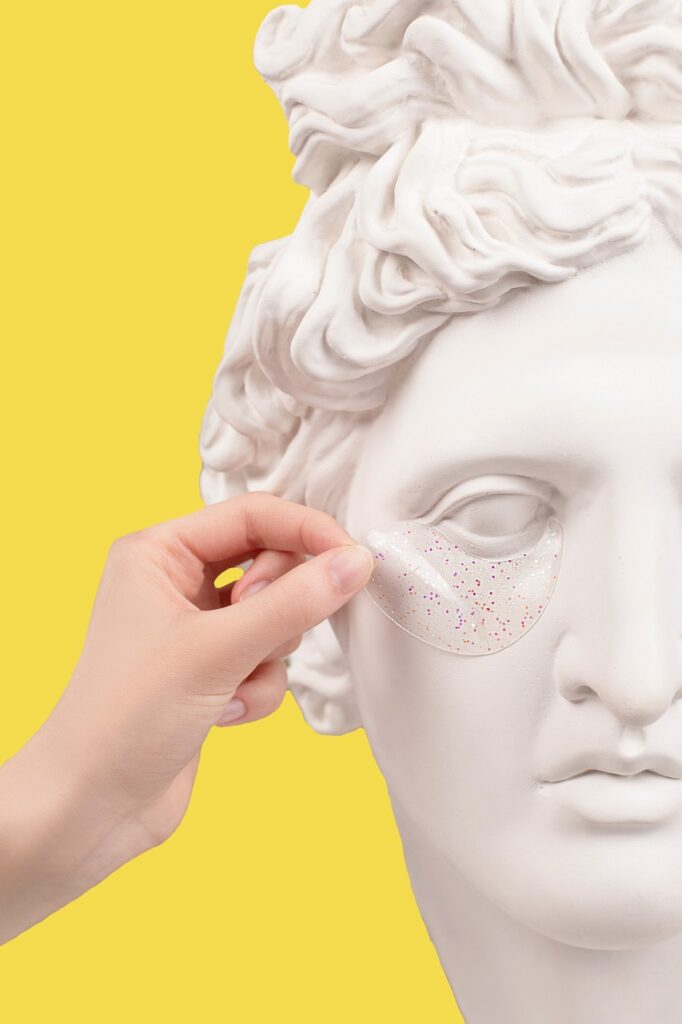
Achieving a healthy and glowing complexion can pose a challenge for those with a dry T-zone, which encompasses the forehead, nose, and chin areas. This skin condition is often characterized by flaking, tightness, or redness, and may be caused by various factors such as climate changes, improper skincare routines, or using the wrong products.
Understanding and addressing the underlying causes of a dry T-zone is essential for deciding on the most suitable skincare regimen. By using gentle products, focusing primarily on proper hydration, and carefully examining the specific needs of your skin type, you can effectively manage and improve your dry T-zone.
In this article, we will discuss five skincare tips that can make a significant difference in the overall appearance and health of your skin, especially when dealing with a dry T-zone.
But first, let’s have a look at a couple of factors that influence your skin.
Factors Influencing Dry T-Zone
Lifestyle Choices
- Various lifestyle choices also impact the T-zone’s dryness. Your diet plays a vital role in maintaining healthy skin. Consuming foods rich in essential fatty acids, antioxidants, and vitamins will help nourish and repair your skin from within.
- Hormonal imbalances can also influence your skin and cause dryness in some areas, such as the T-zone. Therefore, it is important to have regular check-ups to ensure optimal hormonal balance.
Environmental Factors
- Dry weather and winter conditions can significantly contribute to a dry T-zone. Cold temperatures and low humidity levels cause moisture levels to drop, leading to the skin’s dehydration. During these times, it is essential to adapt your skincare routine to counteract the effects of harsh environments.
Incorporating these factors into a tailored skincare routine, including using a mild cleanser, moisturizing, and exfoliating as necessary, can help you manage a dry T-zone effectively. Emphasizing the importance of both environmental and lifestyle choices will enable you to maintain healthy, radiant skin.
5 Skincare Tips for Dry T-Zone
1. Cleanse and Exfoliate
Choosing the right cleanser is crucial for maintaining a balanced T-zone. Ideally, a gentle and hydrating face wash or micellar water should be used. Exfoliating once or twice a week with glycolic acid or salicylic acid can help remove dead skin cells and prevent the buildup of oil in the T-zone. Make sure not to over-exfoliate, as this can lead to irritation and dryness.
2. Balance Moisture
Maintaining proper hydration is key to managing a dry T-zone. Use a moisturizer that is specifically designed for combination skin, which balances oil production while providing hydration. Aloe vera is an excellent ingredient to look for, as it soothes and hydrates without clogging pores.
3. Effective Toning
Using toners is an effective method to enhance the hydration level of your skin. Incorporate a toner into your skincare routine to help balance oil production and refine pores.
Look for options containing lactic acid, AHAs, or PHAs, which are effective in clearing out blackheads and whiteheads. Avoid toners with high alcohol content, as they can strip the skin of moisture and exacerbate dryness. A popular choice is L’Oreal Paris 5% Glycolic Acid Peeling Toner, Revitalift Glycolic Toner.
4. Use Face Masks
Using face masks specifically tailored to your T-zone’s needs can help improve its appearance. Clay and charcoal masks are particularly effective in absorbing excess oil, while gel-based masks containing ingredients like aloe vera can provide much-needed hydration. Apply these masks once or twice a week for the best results.
5. Wear Sunscreen
Incorporating an SPF product into your routine can help protect the T-zone from sun damage and reduce the risk of premature ageing. Look for non-comedogenic options developed specifically for acne-prone skin, and don’t forget to reapply as needed.
Complementary Approaches
Professional Help
Seeking advice from a dermatologist or esthetician can be helpful for individuals with a dry T-zone. These professionals can provide customized solutions to help manage excess oil and other skin concerns.
They could recommend treatments such as the use of blotting papers or pore strips to help control oil in this specific facial area without causing further dryness or irritation.
Nourishment and Care
To deal with a dry T-zone, it’s important to have a comprehensive skincare regimen. This may include the use of gentle exfoliation to remove dead skin flakes, as well as nourishing products that don’t exacerbate excess shine.
A suitable moisturizer is crucial, and it’s a good idea to opt for oil-free formulas like La Roche-Posay Effaclar Mat Daily Face Moisturizer.

To ensure proper nourishment and care, there are a few other important things to keep in mind:
- Avoiding certain ingredients: Some ingredients can be irritating to the skin, and they can make dry T-zone worse. These ingredients include alcohol, retinoids, fragrances, and sulfates.
- Taking shorter showers with lukewarm water: Hot water can strip the skin of its natural oils, leading to dryness. So, it’s best to take shorter showers with lukewarm water instead.
- Using a humidifier: A humidifier can help to add moisture to the air, which can help to keep the skin hydrated. This is especially helpful during the winter months, when the air can be very dry.
- Getting adequate sleep: Getting enough sleep is important for overall health, including skin health. When you sleep, your body produces hormones that help to repair and rejuvenate the skin.
Adopting a healthy lifestyle contributes significantly to the overall health of one’s skin. Drinking adequate water, consuming a balanced diet, getting enough sleep, and managing stress are essential factors in maintaining vibrant and nourished skin.